Driving traffic to your website is crucial, if you manage a website or own a business, you know better how important this is to turning visitors into customers on your website. Conversion rate optimization (CRO) tools play a key role in supporting businesses increase their websites and implement changes that lead to elevated engagement and conversions. Conversion Rate Optimization (CRO) is all about boosting your website.
There are numerous top conversion rate optimization tools available to build this process more efficient and easier.
In this blog, we’ll explore top 10 conversion rate optimization tools which will best for your businesses growth in 2025 and ahead. We’ll also tell you about how conversion rate optimization tools help boost website performance and everything which is important for your business.
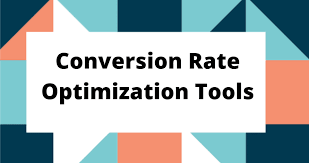
What are the conversion rate optimization tools?
CRO tools are digital platforms or software applications designed to support businesses improve the percentage of website visitors who complete a desires action-such as making a purchase, signing up for a newsletter, or filling out a contact form. These tools analyze user behavior, test various versions of web pages, and provide data-driven insights that support identify and fix issues that may be causing users to drop off.
Common features of conversion rate optimization tools A/B testing. heatmaps, session recordings, funnel analysis, form analytics, and personalization options. By using CRO tools, businesses can better understand how users interact with their website, pinpoint where conversions are lost, and implement changes that lead to higher engagement and increased sales-ultimately the return on investment (ROI) from existing traffic.
How Conversion Rate Optimization (CRO) tools help improve website performance?
Conversion rate optimization (CRO) tools help improve website performance by providing insights into user behavior and enabling data-driven changes that increase the user experience, increase engagement, and drive more conversions.
Here’s how they help:
- Identify User Behavior Patterns: CRO tools like heatmaps, session recordings, and click-tracking show how users interact with a website-what they click on, where they scroll, and where they drop off. This helps identify usability issues or distractions that prevent users from converting.
- Test and Optimize Web Elements: With A/B testing and multivariate testing features, businesses can test various of headlines, buttons, layouts, and images to see which variation performs better. This allows continuous optimization based on real data rather than guesswork.
- Boost User Experience: By analyzing form completions. loading times, and navigation paths, CRO tools help improve the general website structure, simplify navigation, and remove friction points that cause users to abandon the site.
- Personalize User Journeys: Advanced CRO tools offer personalization feature, allowing businesses to display various content or offers based on user behavior, location, or past interactions-leading to higher relevance and engagement.
- Increase Page Speed and Mobile Responsiveness: Some tools give performance reports that highlight slow-loading elements or mobile design flaws. helping you create a smoother, faster browsing experience over devices.
- Track Funnels and Drop-offs: CRO tools help visualize the customer journey by sales funnels and pinpoint exactly where users exit. This help in fixing specific steps in the funnel to reduce bounce rates and increase conversions.
While, CRO tools transform raw visitor data into actionable insights, supporting businesses refine their websites to meet user expectations, boost conversion rates, and ultimately enhance revenue without necessarily increasing traffic.
Basic Features to look for in a Conversion Rate Optimization (CRO) tool
When selecting a conversion rate optimization (CRO) tool, its important to look for key features that align with your business goals and help you understand and increase user behavior effectively.
Below are the Basic features to look for in a CRO tools:
Data Analysis and Reporting
These features permit you to track key metrics like conversion rates, bounce rates, user sessions, and engagement over different pages. Good conversion rates optimization tools provides customizable dashboards, detailed reports, visual charts, and real-time analytics that support identify trends, test results, and areas needing improvement. They often include segmentation and filtering options, enabling you to break down data by device, location, traffic source, and user behavior-making your optimization efforts more targeted and effective.
Funnel Analysis
Funnel analysis is a feature in CRO tools that tracks the steps users take on your website before completing a specific goal, such as making a purchase or signing up. It supports visualize the user journey by breaking it down into stages-like homepage> product page> cart > checkout-and shows where users drop off.
This insight helps you identify weak points or friction in the conversion path, so you can make targeted improvement to decrease abandonment and enhance overall conversion rates.
Heatmaps and Session Recordings
Heatmaps show where users click, scroll and move their cursor, helping you understand which parts of page grab attention or are ignored. Session recordings capture real user session in real time, allowing you to watch how visitors navigate, where they get stuck, or what leads them to leave. Together, these tools help identify usability issues, optimize layout and content placement, and improve the overall user experience to boost conversions.
Audience Segmentation
Allows you to test and personalize experiences for different user groups based on behavior, location, device type, traffic source, or past actions. This segmentation helps you understand how different types of users interact with your site and which segments are more likely to convert. Through monitoring each group separately, you can create personalized experiences, targeted messaging, and more effective A/B tests-ultimately enhancing engagement and improving conversion rates.
Integration with Other Tools
Integration with other tools is a crucial feature of conversion rate optimization platforms that allows seamless connectivity with your existing marketing, analytics, CRM, and content management system-such as Google Analytics, HubSpot, Shopify, WordPress, and more. These integrations enable you to share data across platforms, streamline workflows, and gain a more comprehensive view of user behavior and performance.
By syncing CRO insights with other tools, you can make more informed decisions, automate actions, and increase the overall efficiency and effectiveness of your optimization strategy.
Feedback tools and Surveys
Users feedback directly gives qualitative data that complements quantitative insight. Polls, trends, Surveys and feedback widgets support businesses understand user pinpoints and refine their giving accordingly.
Top 10 Conversion Rate Optimization Tools
Selecting the right CRO tool is really too difficult for getting sustainable business success, growth and driving conversion rates higher. Here are the top 10 Conversion Rate Optimization (CRO) Tool every business should consider in 2025, each explained in detail with its key features and benefits:
1. Google Optimize (GA4 Integration)
Google Optimize, now evolving under GA4 (Google Analytics 4) integration, is a free and powerful too for A/B testing and personalization. It permit you to test various version of web pages to see which performs best based on real-time visitor behavior. With tight integration with Google Analytics, you can use advanced segmentation, targeting, and data analysis features to make informed optimization decisions.
Its especially great for small to medium-sized businesses due to its cost-effectiveness and user-friendly interface.
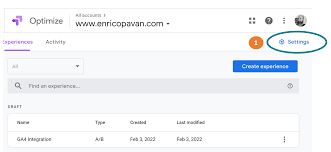
Key Features:
- Direct integration with Google Analytics 4
- Audience targeting and segmentation
- A/B and multivariate testing
- Easy-to-use visual editor
- Real-time experiment
2. Hotjar
Hotjar is one of the most popular conversion rate optimization tools for visual behavior analysis. It offers heatmaps, session recordings, surveys, and feedback pools to understand how users engage with your site. Hotjar excels in delivering qualitative insights, showing you exactly where users click, or get stuck. It also offers real-time
suggestions and allows direct interaction with users through on-site feedback widgets-making it a go-to tool for understanding the “why” behind user behavior.
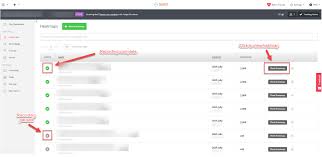
Key Features:
- Heatmaps (clicks, scrolls, movement)
- Session recordings
- On-site surveys and feedback polls
- User journey insights
- Incoming feedback widget
3. Optimizely
Optimizely is a leading experimentation platform known for its robust A/B testing, multivariate testing, and server-side testing capabilities. It’s ideal for enterprise-level businesses needing deep testing and customization. Optimizely helps complex experiments, dynamic personalization, and integrates well with most tech stacks.
It also includes performance tracking and behavioral targeting, making it one of the most advanced CRO tools on the market.

Key Features:
- A/B, multivariate, and server-side testing
- Personalization and targeting
- Advanced experiment management
- Real-time performance results
4. VWO (Visual Website Optimizer)
VWO is an all-in-one conversion rate optimization platform offering a suite of tools including heatmaps, A/B testing, funnel analysis, and behavioral targeting. Its drag-and -drop editor makes it easy to run experiments without coding knowledge.
VWO also gives predictive analytics and smart insights that support marketers test hypotheses efficiently.
It’s a comprehensive selection for both beginners and experienced optimizers.
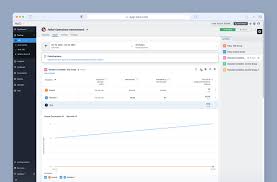
Key Features:
- Split testing
- Funnel analysis and form tracking
- Drag-and-drop test builder
5. Crazy Egg

Key Features:
- Click maps, scroll maps, and heatmaps
- Session recording
- Confetti tool for segmented click tracking
- Easy page editor
6. Unbounce
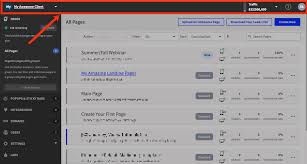
Key Features:
- Drag-and-drop landing page builder
- Smart Traffic (AI-based page optimization)
- Pop-ups and sticky bars
- Dynamic text replacement
- Conversion-focused templates
7. Convert
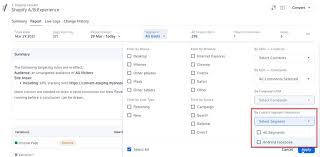
Key Features:
- GDPR-complaint A/B and multivariate testing
- Advanced audience targeting
- Deep integrations with CRM/analytics tools
8. Lucky Orange
Lucky Orange combines multiple CRO features-heatmaps, live chat, session recordings, conversion funnels, and poll-into intuitive dashboard. What sets Lucky Orange apart is its real-time user analytics and live chat, which lets you assist visitors instantly.
Its an affordable, all-n-one tool for small to mid-sized businesses looking to improve user experience and enhance conversion rates with real-time engagement.
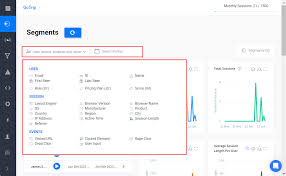
Key Features:
- Live chat and visitor polls
- Scroll tracking
- Session recordings
9. HubSpot

Key Features:
Built-in CTA optimization, pages
Smart forms and personalization
CRM and automation integration
Performance dashboard
10. FullStory
FullDtory is digital experience analytics tool that records every user interaction, form mouse movements to keystrokes. It uses session replay, heatmaps, conversion funnels, and machine learning to surface key insights and user frustrations.
FullStory standout feature is frustration detection, which flags rage clicks and dead ends. This tool is best for businesses looking to deeply understand the user journey and improve UX over web and mobile platforms.
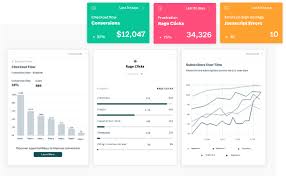
Key Features:
- Taps, Clicks, and frustration signals
- Machine learning-powered insights
- Web + Mobile UX optimization
Through choosing the right conversion rate optimization tools, businesses can drive growth and improve website performance.
How to select the right conversion rate optimization tool for you business?
Choosing the right CRO tool is a important move to getting good users experience and growth of conversions. Now numerous conversion rate optimization tools are available, but its very crucial to understand that tool for your business should be under budget, best for achieving goals, and complete your audience needs.
Below is a key guide to support you make an informed decision:
1. Define Your Business Goals
Before choosing a CRO too, its important to clearly access what you want to achieve, whether its enhancing sales, generating more leads, boosting user engagement or reducing bounce rates. Understanding your primary conversion goals supports you select the right tool with features aligned to your business specific needs.
Important Question to ask
Start by identifying what you want to improve:
Do you want more sales, or engagement?
Are you optimizing landing pages, product pages, or the entire funnel?
Above will guide whether you need tools for A/B testing, heatmaps, funnel analysis, or surveys.
2. Know Your Audience Size and Website Traffic
Your website traffic volume plays a crucial part in choosing a CRO tool. High-traffic website can benefit from advanced testing tools like multivariate testing, while low-traffic sites may more on qualitative insights such as session recording and feedback. Understanding your audience size helps you choose tools that deliver accurate results and meaningful data based on your traffic capacity.
Tip
Low-traffic websites may benefit more from qualitative tools like session recordings and surveys than A/B testing.
3. Budget Consideration
When selecting a CRO tool, this is important to evaluate your budget and find a solution that offers the best value for your investment. Free tools like Google Optimize are suitable for basic testing needs, while mid-range tools like Hotjar or Cray Egg offer great features at affordable prices. For large businesses with complex needs, premium tools like Optimizely or Convert give advanced capabilities but come at a higher cost.
Always balance the tools features with your budget to ensure cost-effective optimization.
Consider
Free tools like Google Optimize best for basic testing.
Mid-range tools like Hotjar and Crazy Egg (affordable and user-friendly).
Enterprise tools like Optimizely and Convert (deeper insights).
While, knowing your audience behavior, by evolution your business needs, according to your business size, and budget, you’ll be choose a stronger conversion rate optimization tool that will increase your businesses growth and performance.
What are the benefits of using conversion rate optimization tools cross traditional web analytics?
Below are the key benefits of using CRO tools over traditional web analytics:
- Provide deeper insights into user behavior.
- Allow real-time A/B and multivariate testing to compare page variations.
- Offer heatmaps, session recordings, and user feedback for visual analysis.
- Support identify and fix drop-off points in the conversion funnel.
- Enable personalized user experience based on Visitor data.
- Improve decision-making with actionable data, not just traffic numbers.
- Integrate with marketing tools for a more holistic optimization strategy.
- Enhance ROI focusing on converting existing traffic instead of just driving more traffic.
Conclusion
In 2025, Conversion Rae Optimization (CRO) tools have become essential for businesses aiming to maximize the value of their existing web traffic. These tools go beyond traditional analytics through offering actionable insights into user behavior, enabling data-driven decisions that increase user experience and boost conversions.
Whether its through A/B testing, heatmaps, funnel analytics, or personalized user targeting, conversion rate optimization tools support businesses and websites identify what works doesn’t the right tool depends on your goals, traffic, and integration needs.
Through leveraging the power of CRO tools, websites and businesses can continuously refine their digital strategies, boost performance, and run sustainable growth in a competitive online landscape.





